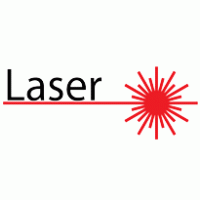26 - 29 April 1999
Lacona IIIFlorence, Italy
Conference: Lasers in the Conservation of Artworks

Date
26-29 April 1999
Organizer
Istituto di Fisica Applicata „Nello Carrara”- Consiglio Nazionale delle Ricerche, Firenze, Italy
Chair person
Renzo Salimbeni
Book of Proceedings
LACONA III : Lasers in the Conservation of Artworks
Editors
Renzo Salimbeni
Istituto di Fisica Applicata „Nello Carrara”- Consiglio Nazionale delle Ricerche, Firenze, Italy
Giorgio Bonsanti
University of Florence
Editorial Commitee
Renzo Salimbeni
Istituto di Fisica Applicata „Nello Carrara”- Consiglio Nazionale delle Ricerche, Firenze, Italy
Giorgio Bonsanti
Opificio delle Pietre Dure, Via degli Alfani 78, Florence
Costas Fotakis
Foundation for Research and Technology – Hellas, PO Box 1527, Gr – 711110 Heraklion, Crete
Wolfgang Kautek
Laboratory for Thin Films Technology, Federal Institute for Material Research and Testing, D-12200
Eberhard Konig
Istitute oh History of Art, Free University Berlin
Veronique Verges – Belmin
Laboratoire de Recherche des Monuments Historiques, Paris
Kenneth Watkins
Department of Mechanical Engineering, Liverpool
LACONA III : Lasers in the Conservation of Artworks:
Florence, Italy
Editor: Renzo Salimbeni, Giorgio Bonsanti, Journal of Cultural Heritage, Elsevier (2000)
ISSN 1296-2074
Introduction
This supplement of the Journal of Cultural Heritage hosts the proceedings of the third international conference ‘Lasers in the Conservation of Artworks’.
After the previous conferences in 1995 in Crete and in 1997 in Liverpool, the meeting in Florence held in 1999 brought together more than 250 participants, demonstrating the increasing interest of conservators for the laser procedures.
After almost 30 years of development laser cleaning has been tested in the restoration of valuable artefacts made out of a variety of materials. The results have often demonstrated a degree of excellence in the precision of the removal of deteriorated superficial layers and the respect of the substrates.
Lasers are by now the unique proposal of a new restoration technique coming from the field of physics.
They offer contactless procedures, which may be far superior to mechanical methods and less invasive than chemical approaches. As may be found in several reports in this book, laser cleaning has often been integrated with well-acquainted methods in order to solve otherwise difficult restoration problems.
For the comprehension of the readers, the papers have been divided into chapters according to the constituent materials such as stones, pigments, metals and so on. Within each chapter, papers have been ordered in the sequence of studies, applications, tests and laser instrumentation.
A final chapter has been devoted to Laser Diagnostics as another important contribution offered by laser techniques to conservators. Evaluating the number of studies presented for the different material problems, laser cleaning of stones appears to be the most experimented approach with a significant utilization by conservators in the restoration of important statuary masterpieces, historic buildings and monuments.
More debated appears the case of laser cleaning of metals, still showing interesting applications to daguerreotypes and archaeological findings.
Special projects have focused on stained glass windows reporting advancements in the feasibility of a laser technique.
The interest for a laser technique applied to pigments has offered improvements concerning two different approaches: a more conservative manual application of an eyesafe infrared laser operating as an optical tool; and a more speculative automated work station using ultraviolet lasers in association with an optical diagnostic.
Other interesting reports describe laser cleaning of deterioration problems on organic materials such as paper, parchments and wood, with limitations and successful results. Finally, very interesting physical methods have been employed to gain useful informations for the conservators. Proton beams, electronic paramagnetic resonance, Raman spectroscopy, holography, laser-induced plasma spectroscopy, optical fringe detection and so on are the various techniques examined in some cases for the first time in typical restoration problems.
Experts previously engaged in the International Scientific Committee of LACONA III have refereed all papers and we address grateful thanks for their invaluable work.
The editors also acknowledge and wish to thank Dr Roberto Pini and Dr Salvatore Siano of IEQ-CNR for the precious editorial work.
The editors also acknowledge and wish to thank Dr Roberto Pini and Dr Salvatore Siano of IEQ-CNR for the precious editorial work.
A special thank you to Professor Angelo Guarino, Editor in Chief of the journal and his staff at the Special Project Cultural Heritage of CNR for the support given for the organisation of the conference and the publication of this supplement.
Florence, March 2000
Get In Touch
1234 sAn Francisco, CA 12345
+1 555 0394 848
info@diviconsulting.com

